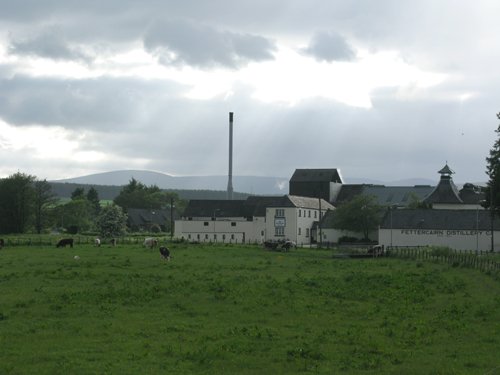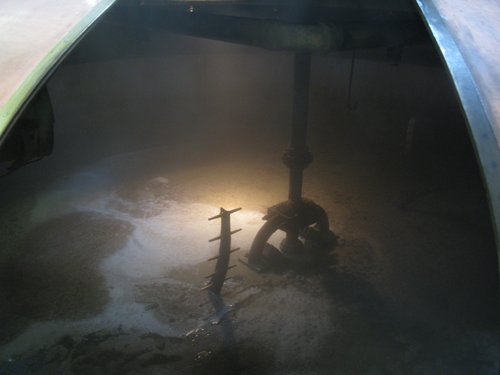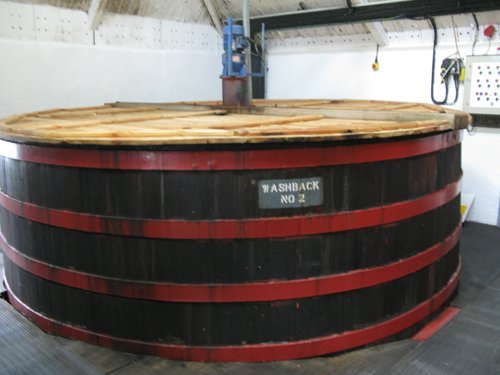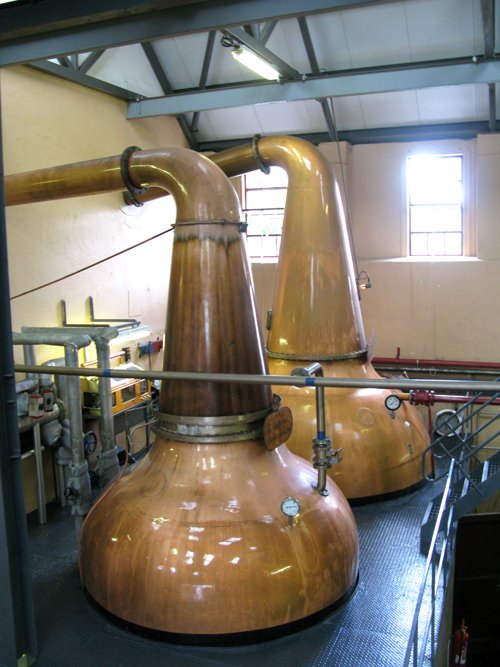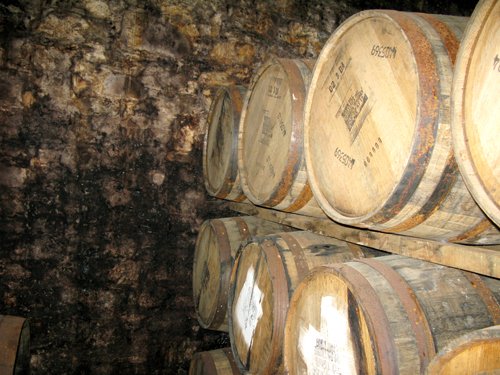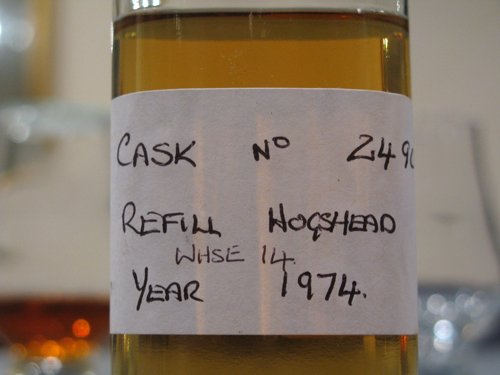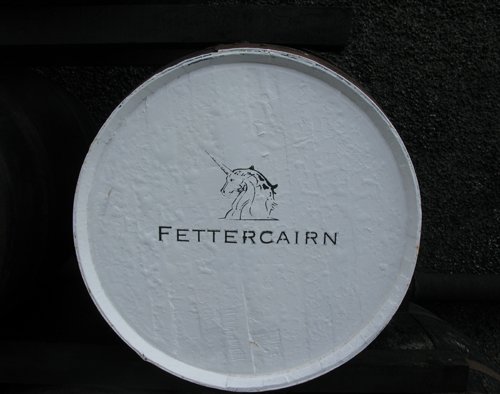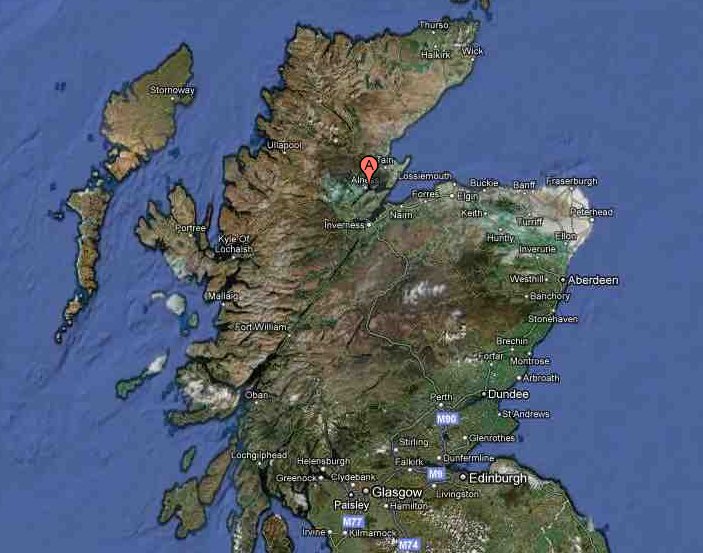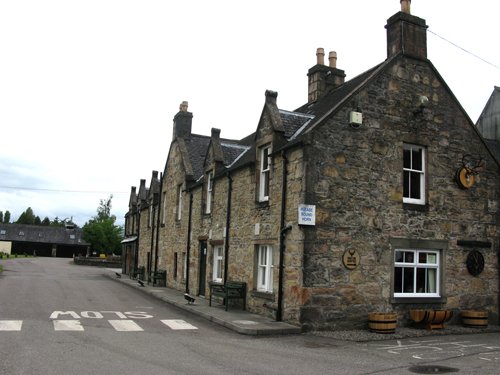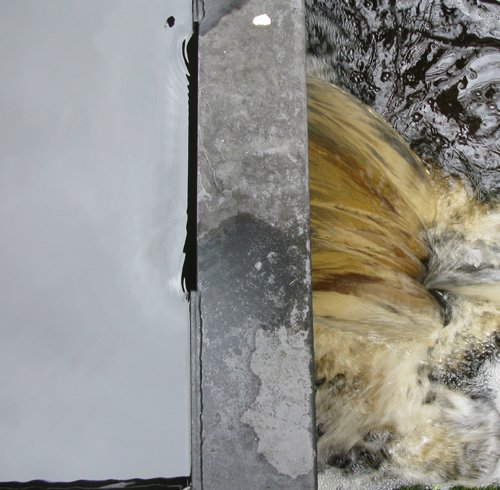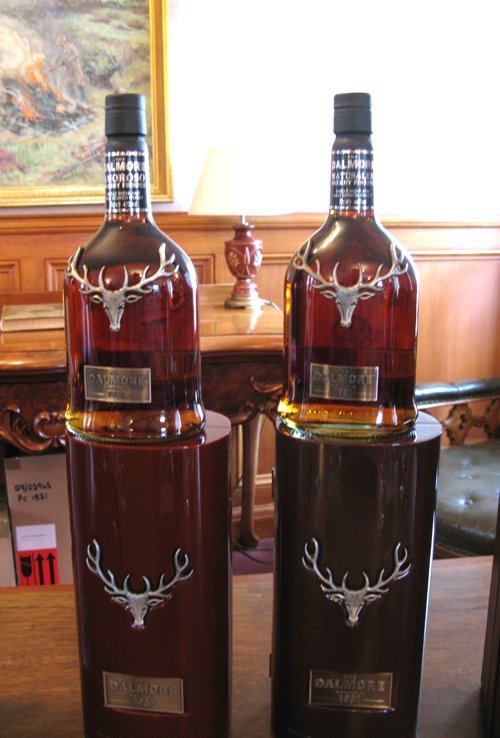Last week I visited the Isle
of Jura, The Dalmore, and Fettercairn distilleries in Scotland. These
brands are all owned by White &
Mackay. This post is about visiting the Fettercairn distillery.
(Fettercairn marked with red pin. Map made with Google Maps)
From The Dalmore distillery we went on yet another gorgeous drive over two mountain ranges to reach Fettercairn, a distillery named after the town where it is located. As you can see on the map below, after you come down from the mountains where much of the vegetation is heather (brown at this time of year) like low scrub bushes, you hit the eastern farmlands with rich soils and plenty of water coming off the hills.
The Fettercairn distillery is about a five-minute walk from the center of Fettercairn with its one pub and stone arch commemorating a pit stop from Queen Victoria. It is surrounded by fields and there are cattle grazing across from the distillery.
The distillery is full of much original equipment from 1824 with a few technological improvements. They no longer do floor maltings (I think only five or six distilleries still do) but otherwise things look pretty old-fashioned here.
(Fettercairn Distillery. Cows in foreground.)
The mash tun is an old copper-topped one with mechanically-driven (see below) stirrers inside. The drainage at the bottom of these older mash tuns is different from newer models, so to compensate the barley must be ground to a courser level.
(Above: Copper-topped mash tun. Below: Inside the mash tun.)
The distillery also has wooden washbacks where fermentation happens. Most wooden washbacks I've seen are made from Doug Fir pine from Oregon.
(Wooden washback)
Unlike at The Dalmore distillery that uses the brown-colored peat-rich river water, Fettercairn uses water from an underground spring for mashing, fermentation, and reducing to barrel proof. It is crystal clear and rich with minerals- you can taste a sort of metallic-granite flavor and it is very drying in the mouth, almost a tannic feeling.
(Stills at Fettercairn)
Fettercairn has two pairs of stills and the still for the second distillation (the "spirit still") has a pretty unique feature.
On yesterday's post about The Dalmore I noted that the still has a reflux box (don't know the technical name for it) in which cold water runs around the top of the neck of the still to encourage only the heavy flavor molecules to cross over.
At Fettercairn they do this in a different way: during the part of the distillation when they're getting the heart of the spirit (the part that will actually be put in barrels rather than recycled), cold water runs down the outside of the neck of the still. I've never seen anything like this on a still before.
It's hard to capture in pictures, so I took this short video. I think this is supercool, but I'm a nerd.
After the whisky is distilled and put into barrels it is stored in traditional dunnage warehouses- old, earthen floor warehouses in which barrels are stacked no more than three-high. There are thick walls and in this case a slate roof. The walls are super moldy and reminded me a lot of the aging warehouses in Cognac.
In these dunnage warehouses (about 12 of them for Fettercairn, all local), there is not a great deal of temperature difference between the top and bottom row. This is quite different from a racked warehouse (think of the tall bourbon warehouses), in which casks are stacked several stories high and temperature, evaporation, and rate of aging vary greatly in different parts of the warehouse.
Now for the bad news: Fettercairn is not available in the US. Even in Scotland its pretty rare to find it as a single-malt. They released a new bottling called Fior that's really tasty and they can't keep it on the shelves. They also sell some 30-year-old and 40-year-old expressions but who can afford such things?
We tasted several barrel samples and they were really wild- a 2004 ex-bourbon had a salty finish and a bourbon grain taste. A 1997 sherry refill cask sample tasted fruity-savory with flavors of sundried tomato and cranberry. The 1974 and 1973 ex-American oak hogsheads were insane floral explosions of lilac, jasmine, rose, and other candied flower flavors.
I assume that most all Fettercairn goes into blends, as most whisky goes toward blends even if it is from a notable single-malt. I do wish they sold this single-malt in the states because:
1. It tastes good.
2. Unicorns!


